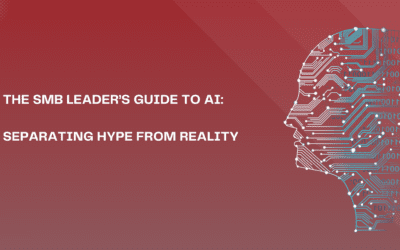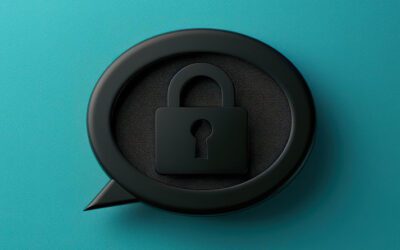There’s no question that today’s workforce is putting more demand on how businesses operate. These demands are not only being driven by people (“How Generation-Z Will Revolutionize the Workplace”, Forbes), they’re also being driven by factors beyond our control. Enter entropy, uncertainty and randomness.
New York Times best selling author, James Clear, provides a great analogy of what entropy actually is:
“Imagine that you take a box of puzzle pieces and dump them out on a table. In theory, it is possible for the pieces to fall perfectly into place and create a completed puzzle when you dump them out of the box. But in reality, that never happens.”
In IT, we tend to think what we design today will meet client needs for many years to come. We base everything around a fixed timeframe – subscription plans, licensing agreements, support and warranty – most of which last one to five years. And we do so at a particular point in time when the perception of perfection exists, or, when we think we have everything under control; all variables identified; all use cases validated.
Then… entropy, disorder. It’s Murphy’s Law.
As IT experts, the odds of us designing, deploying, and supporting a solution that will meet every possible outcome – every possible dumping of the puzzle pieces, as James Clear would put – are exponentially out of our favour, especially with so many factors beyond our control: school strikes, cost of living, affordable housing, climate change, coronavirus, mental health. Just to name a few.
Our business and technology plans become challenged and we’re forced to make “knee jerk” decisions based on a perceived “point in time” crisis, as we neglect the natural tendency of things to lose order. The fact of the matter is businesses will continue to be challenged by outside influences beyond our control. For businesses to survive and remain profitable, we must embrace the “uncertainty or randomness” through flexibility and agility in all our IT decisions. It would also serve to remember that history tends to repeat itself.
In 2003, SARS greatly impacted Toronto, forcing many organizations to reconsider how employees could remain productive during a crisis – the ultimate test to business continuity planning. Remote work capabilities were a hot topic and massive investments were made to allow for a solution perceived as temporary. After SARS dissipated, many of these investments faded away as the crisis (and timeframe) no longer applied.
In 2010, Toronto hosted the G20 Summit and was met with riots that rendered the city quite inhospitable. These riots were expected and, again, businesses invested in a remote work strategy to overcome the potential loss of productivity during the event.
Today, external influences that are forcing business and technology change are all too prevalent, both at a macro global scale and to an infinite amount of micro scales, and businesses are not entirely ready to accept this change.
Certainly, businesses that have location-dependent processes, such as those in manufacturing or healthcare, may never be able to change simply due to the nature of their business model or, if attempted, not without significant expenditures in duplicating “place” or shifting to alternative business models. For the rest of us, we must deal with Murphy and provide agility and flexibility for what businesses need and require the most – people.
Businesses must focus entirely on their people.
At Third Octet, we believe successful businesses are built on happy, engaged, and collaborative employees – employees who are able to focus on high-value and deeply meaningful work. We believe successful businesses are enabled by technology that removes physical place as a barrier to productivity and engagement. We believe successful businesses allow freedom of where and how employees work, whether driven by personal request or external requirement. We believe agility and flexibility are the keys to unlocking “Digital Transformation”, to Bettering the World, to achieving work-life balance, and importantly, to unlocking the best in our people. We believe agility and flexibility are necessities to business survival – meeting the needs, planned or unplanned, of today’s Modern Workforce.
In 2019, The Conference Board released their annual Job Satisfaction report, stating approximately “54% of American workers were satisfied with their employment.” The remaining 46% were not in the “right place”, according to Thrive Global’s article “Why You’re Not Happy with Your Career”, continuing that we typically settle on a job “just because we need to pay our bills, take care of our families, or just have some food on the table.”
In Toronto, that’s especially true. Being a homeowner in Toronto is extremely expensive, more so than the likes of, say, San Francisco and London. As a matter of fact, and according to LowestRates.ca, being a commuting homeowner in Toronto requires a base salary of $88,000. And, on the assumption you can find a home in the city, you’ll likely own a car and drive to work, bumping the base requirements to $94,000. This does not even factor in other life necessities, such as childcare.
People end up in an “endless loop”, “doomed to keep switching jobs in hopes that the next one will provide, if not better conditions, at least a more decent wage” just to meet the bare requirements of living in the city. Alternately, we look for more affordable housing outside of major metropolitan areas and spend countless hours commuting back and forth, at the toll of our personal lives and our mental health. Do we want to work to live, or live to work?
If forcing employees into the office is the only option you provide, you’re missing out on the Modern Workforce – missing great opportunity for great talent simply due to archaic work philosophies. In Gartner’s ReimagineHR Employee Survey, “56% of managers permit their employees to work remotely”, adding “organizations without a progressive remote-work policy will be at a competitive disadvantage for attracting and retaining talent” as part of their Six Trends for CHRO that will Impact How Organizations Experience the Future of Work.
Remote work is clearly important, however so is flexible work – being able to define the hours in which you are most productive. It’s also good for the bottom line. Robert Half’s 2019 Salary Guide reveals that “47 percent of workers would accept a lower salary in exchange for flexible working hours.” Measured in salary alone the bottom-line impacts are significant; however, when coupled with the ability to reduce stress, minimize commute times, drive productivity and improve the overall mental wellbeing of our workforce, the impacts of remote and flexible work are enormous.
“Remote work is not a trend – it’s here to stay”, declares Buffer’s State of Remote Work report.
According to Inc., remote work and flexibility “continue to be a driver for employees as they look for employers in 2020 and beyond, because if employees have more capability to build the work they do around the people and things they care most about, a whole world of possibility opens up in the workforce and in what we’re capable of doing.”
Remote work has no boundaries. Remote work embraces entropy. Remote work embraces the unknowns around school strikes, affordable housing, increasing commute time, pandemics, epidemics, and mental health.
If you are stuck in the legacy mindset of “work is a place”, you’re missing out on opportunities for your business to excel.
Remote work is the Modern Workforce. Contact us to modernize your approach to employee experience or risk losing out on a great opportunity to drive your business forward.




0 Comments